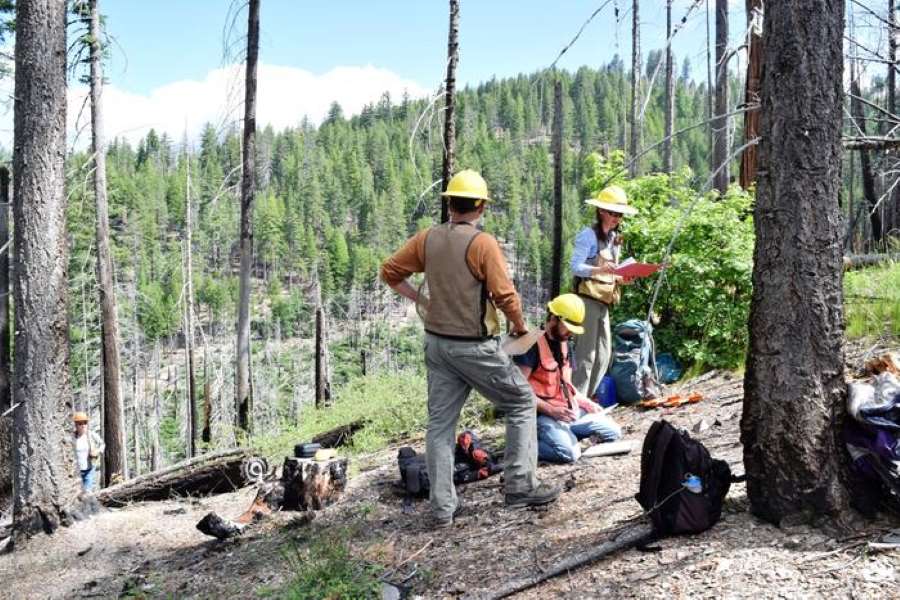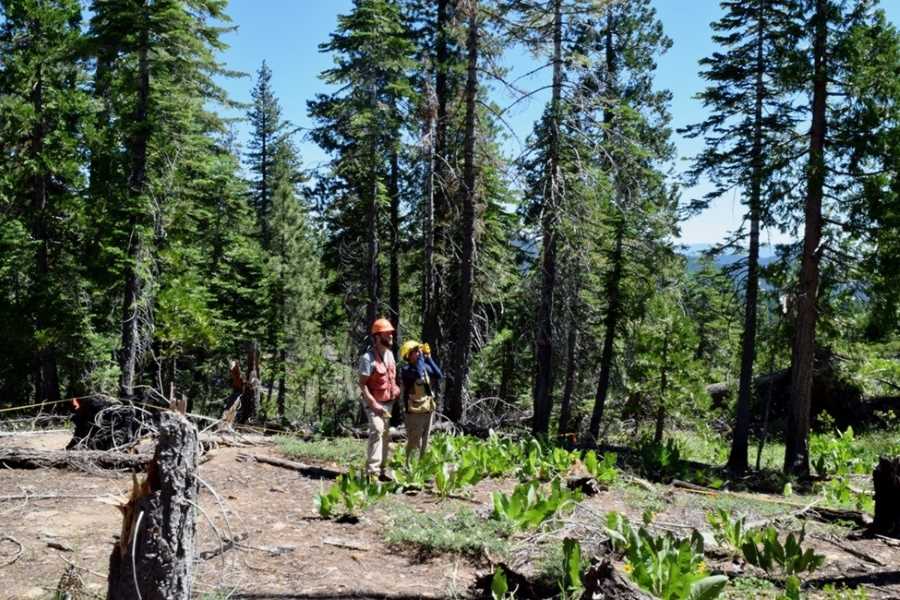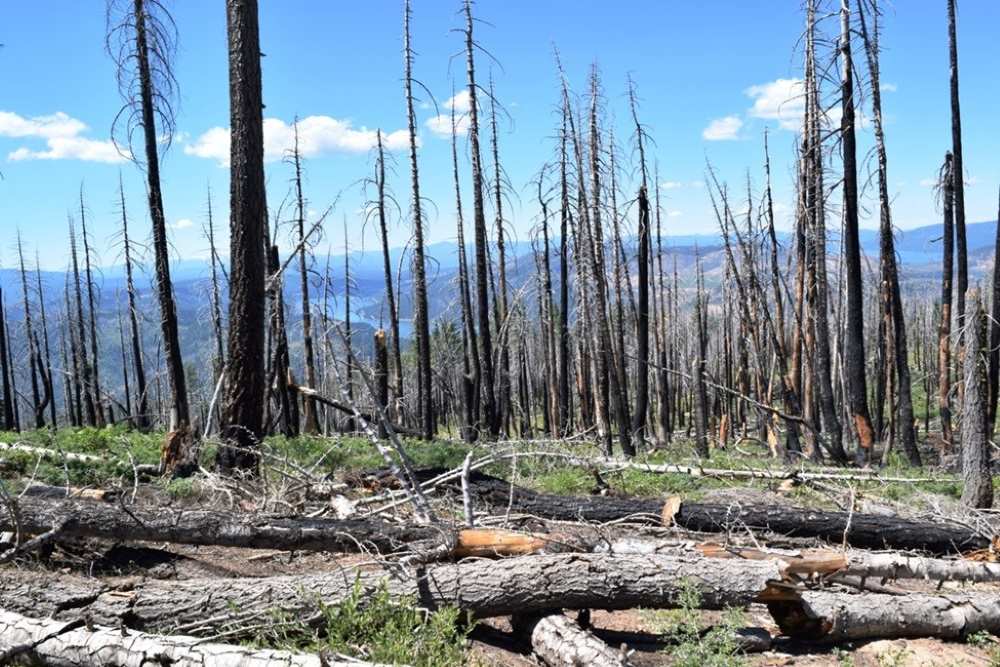Summary:
A century of fire suppression, combined with climate change and drought, has fueled increasingly destructive wildfires in the Western United States. Traditional fire management strategies — such as prescribed burns and thinning — help reduce fire risks, but they also have drawbacks, including smoke pollution and the potential for controlled burns to escape.
A new study published in the Journal of Environmental Management explores an alternative approach: physically harvesting dead wood to lower wildfire risks while enhancing carbon storage. Researchers from Florida Atlantic University simulated different forest management treatments in California’s Sierra Nevada and found that removing dead wood, particularly when combined with thinning, reduced wildfire intensity, decreased carbon emissions, and increased carbon sequestration.
The study suggests that transforming harvested wood into long-lasting carbon-storing products like biochar could further mitigate climate impacts. Scientists say long-term research is needed to assess how this method could restore historical wildfire regimes and promote forest resilience.

Beyond the burn: Harvesting dead wood to reduce wildfires and store carbon
A century of fire suppression, combined with global warming and drought, has led to increasingly destructive wildfires in the Western United States. Forest managers use tools like prescribed burns, thinning, mastication, and piling and burning to reduce fuel – live and dead trees, needles and leaves, and downed branches – that can feed intense wildfires. These methods aim to lower fuel levels, reduce crown density, and protect fire-resistant trees, fostering healthier, more resilient forests.
However, prescribed burning efforts haven’t kept up with the rapid buildup of surface fuel, creating a “fire deficit” – the gap between the amount of fuel that has accumulated, and the fire management efforts needed to reduce it – and raises the risk of severe wildfires.
Prescribed fires in the Western U.S. are an essential tool for managing forests and reducing wildfire risks, but they also come with significant social and environmental consequences. These controlled burns can escape and become wildfires, degrade air quality, reduce visibility and pose serious health risks, particularly respiratory illnesses. In the Pacific Northwest, emissions from prescribed fires have been linked to hundreds of deaths, thousands of respiratory problems, and significant workday losses due to poor air quality.
In addition, human activities like deforestation and logging, as well as pests, drought and large high-severity wildfires, diminish forests’ ability to absorb and store carbon, which is essential for reducing CO2 levels in the atmosphere. Effective wildfire management is key to reducing risks, lowering carbon emissions, and enhancing carbon storage to combat global warming.

For thousands of years, Indigenous Peoples in the Western U.S. played a vital role in forest and fire management, shaping ecosystems through practices like controlled low-severity burns and the collection of non-timber forest products for firewood, shelter, cultural items and tools. These traditions inform modern forest management techniques, (e.g., prescribed burning and piling and burning), but the physical harvesting of dead wood without combustion is now being explored as a way to both reduce wildfire risks and carbon emissions.
Researchers from Florida Atlantic University investigated how removing dead wood could reduce wildfire risks and enhance carbon storage in the Sierra Nevada. The study focused on the effects of physical harvesting – removing specific sizes of dead and downed branches and trees – on wildfire behavior and carbon emissions. Researchers also examined which forest management strategies, particularly those involving combinations of fuel treatments, are most effective in reducing wildfire risks, enhancing carbon storage, and promoting long-term forest resilience.
The team simulated the effects of eight different forest management treatments to see how they affect wildfire risks. Along with a “control” scenario that only included wildfire, the treatments included thinning, physical removal of surface fuel, and prescribed burning, either alone or in combination.
The study found that combining physical harvesting with thinning significantly reduced risks like tree mortality and crown fires, while lowering carbon emissions and offering carbon sequestration through products like biochar, charcoal created by heating organic material in a low-oxygen environment, used to store carbon and improve soil.
“In our increasingly warming world with frequent dangerous fire weather, more people and structures at risk in the wildland-urban interface, health risks from exposure to smoke, and need to enhance carbon sequestration to mitigate global warming, scientists need to examine effective alternative management actions,” said Scott H. Markwith, Ph.D., co-author and a professor in the Department of Geosciences, within FAU’s Charles E. Schmidt College of Science.
He added: “By combining physical harvesting with thinning – removing smaller or fire-vulnerable trees – evidence from this research suggests we can help restore healthy, resilient forests. This approach, paired with transforming wood into carbon-storing products rather than burning it, could reduce wildfire severity and smoke and carbon emissions, while also generating carbon credits.”
Findings from the study offer important insights for forest management strategies that reduce wildfire risks, lower carbon emissions and boost forest carbon storage.
“Over time, repeated fuel reduction treatments, such as prescribed burns, can emit more carbon than a single wildfire in an untreated forest,” said Rabindra Parajuli, Ph.D., lead author and doctoral graduate from the FAU Department of Geosciences under Markwith’s supervision, and a postdoctoral researcher at the University of Georgia. “However, by harvesting dead wood and converting it into biochar – a stable form of carbon – emissions can be reduced. This process not only mitigates health impacts but also increases carbon sequestration, helping to offset the effects of climate change while promoting healthier forest ecosystems.”
Long-term research, including simulation modeling and field experiments, will play a crucial role in evaluating the effectiveness of this approach over time, with repeated treatments and across various forest types. This research will be especially valuable in exploring its potential for restoring historic wildfire regimes, contributing to the health and resilience of forests in the Western U.S.
Asha Paudel, Ph.D., a doctoral graduate from the FAU Department of Geosciences, was the third study co-author and also a former advisee of Markwith.
Journal Reference:
Rabindra Parajuli, Asha Paudel, Scott H. Markwith, ‘Integrating the physical harvesting of dead wood into fuel treatments to reduce wildfire hazards and enhance carbon benefits’, Journal of Environmental Management 376, 124535 (2025). DOI: 10.1016/j.jenvman.2025.124535
Article Source:
Press Release/Material by Gisele Galoustian | Florida Atlantic University
Featured image: A field plot in the Sierra Nevada where researchers surveyed the effects of wildfires. Credit: Asha Paudel, Ph.D. | Florida Atlantic University




